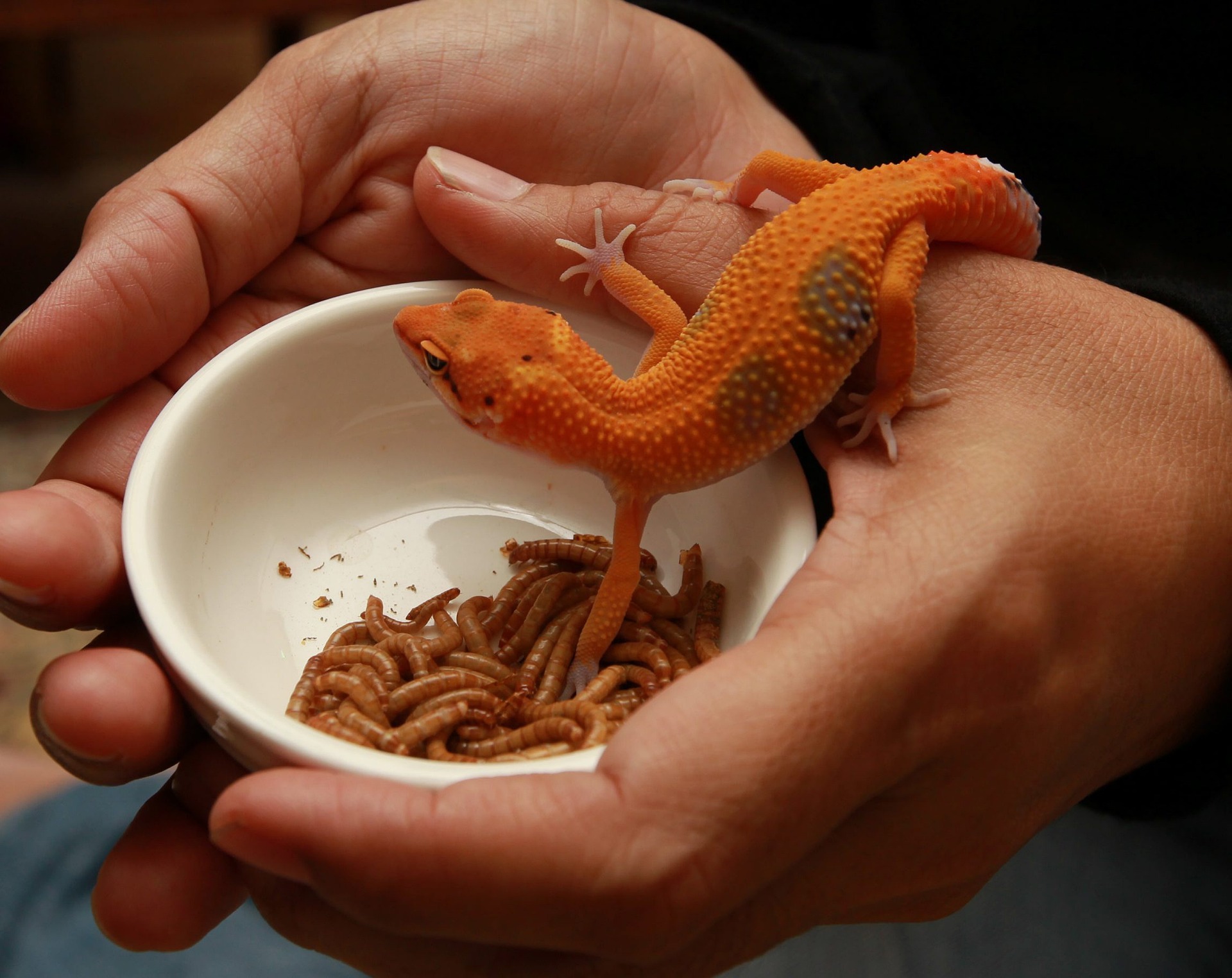Are you a reptile enthusiast? Perhaps you’re a pet owner of these magical creatures. Reptiles are important in the ecosystem, helping to control populations of pests and keeping animals in proper balance in the natural world.
Reptile feeder insects help maintain the health and nourishment that reptiles need to lead long, healthy lives.
Take a look at some of the most commonly used feeder insects in reptile husbandry.
- Cockroaches
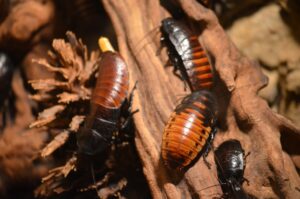 They are an inexpensive source of food, easy to breed and keep. In addition, they are a good size to feed most reptiles without having to chop them into small pieces. Roaches also contain a good mix of proteins and carbs, as well as essential vitamins and minerals.
They are an inexpensive source of food, easy to breed and keep. In addition, they are a good size to feed most reptiles without having to chop them into small pieces. Roaches also contain a good mix of proteins and carbs, as well as essential vitamins and minerals.
There is also a great clean-up crew; they will eat decaying matter in your reptile’s enclosure, keeping the environment clean and healthy. Cockroaches are an excellent choice for the reptile keeper who values nutrition and animal welfare.
They provide an excellent nutritional profile of proteins and fats and can provide the stimulation your pet reptile’s natural predatory instinct.
- Crickets
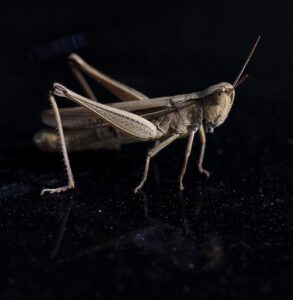 Crickets provide important sources of protein and other essential nutrients for reptiles and amphibians. They also tend to be high-energy sources of food, helping to keep captive reptiles healthy and active. Unlike other insects, they do not need to be gut loaded meaning they can be fed to the reptile straight away.
Crickets provide important sources of protein and other essential nutrients for reptiles and amphibians. They also tend to be high-energy sources of food, helping to keep captive reptiles healthy and active. Unlike other insects, they do not need to be gut loaded meaning they can be fed to the reptile straight away.
Another advantage of using crickets as feeder insects is that they do not fly or jump, making them easy to handle and control. If live crickets are purchased, they will need to be stored in a clean environment with access to food and water. It is also important to avoid overcrowding in order to prevent the spread of disease.
- Mealworms and Waxworms
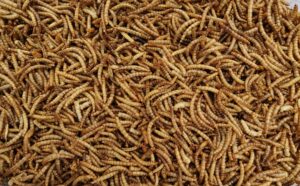 Mealworms have a more slender body structure and mealworm larvae tend to be smaller than waxworms. Waxworms have a more rounded body shape and tend to be quite soft in texture. They are both rich in calcium and are a good source of needed proteins and essential fatty acids.
Mealworms have a more slender body structure and mealworm larvae tend to be smaller than waxworms. Waxworms have a more rounded body shape and tend to be quite soft in texture. They are both rich in calcium and are a good source of needed proteins and essential fatty acids.
Plus, they make an excellent snack or supplement to a reptile’s everyday diet and can add variety to an otherwise boring reptile menu.
Mealworms may also be used to feed small fish and amphibians since mealworms remain in their exoskeleton which provides beneficial minerals for aquatic species.
Waxworms can be used as an occasional treat for reptiles or as a primary food source for amphibians, although waxworms are relatively fatty compared to other feeder insects.
- Buffalo Beetles
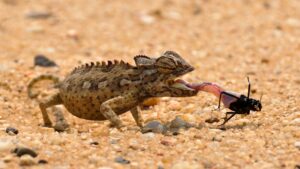 Buffalo beetles are large, black, and hardy insects that can survive extreme temperatures and environments. They are also abundant in many parts of North and South America. They are easy to keep and care for in captivity, and they can be stored in airtight containers in a cool place.
Buffalo beetles are large, black, and hardy insects that can survive extreme temperatures and environments. They are also abundant in many parts of North and South America. They are easy to keep and care for in captivity, and they can be stored in airtight containers in a cool place.
The nutrition they provide can help keep the reptilian pet healthy and their chitin can aid in digestion. They have a high fat content, which is ideal for balancing reptiles’ diets, and they provide plenty of protein.
The Best Reptile Feeder Insects That Ensure Good Health
Reptiles enjoy a variety of food sources, and feeder insects can provide them with essential macro and micronutrients. The feeder insects commonly used in reptile diets include crickets, roaches, worms, and mealworms.
Choosing the right reptile feeder insects is an important factor in a healthy diet, so if you are looking to care for your reptile, research the most appropriate insects for your reptile’s dietary requirements.
Found this article useful? Keep browsing different categories on our blog!
